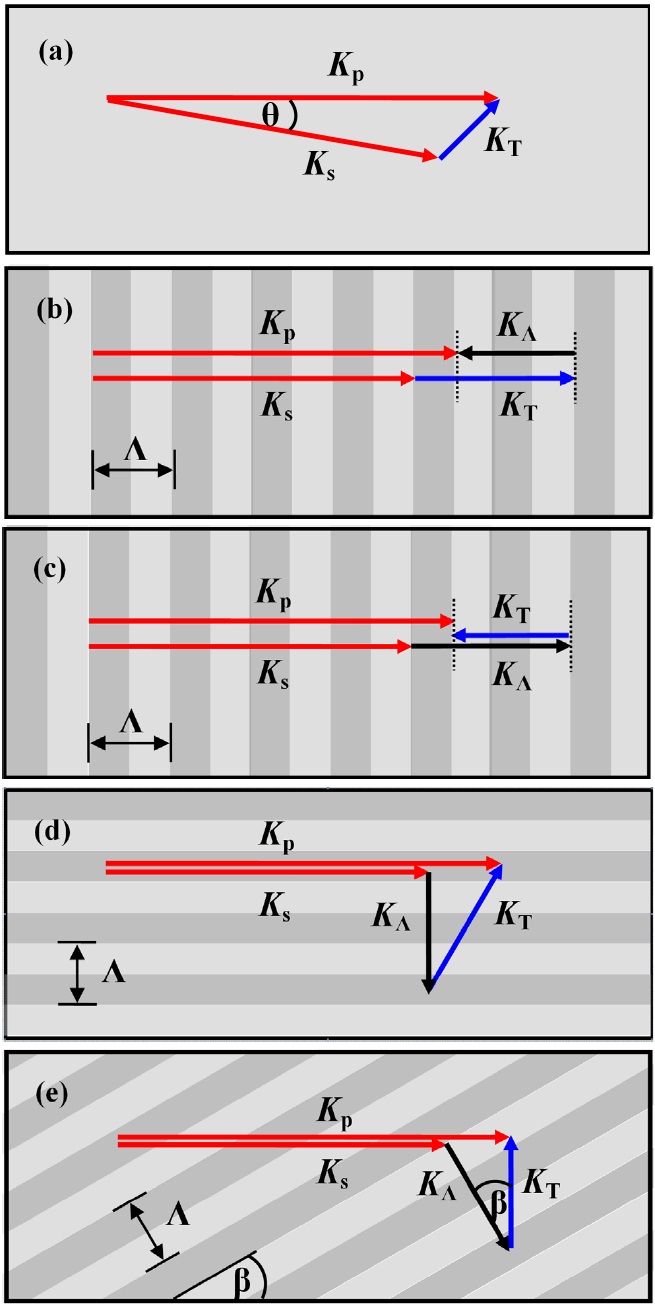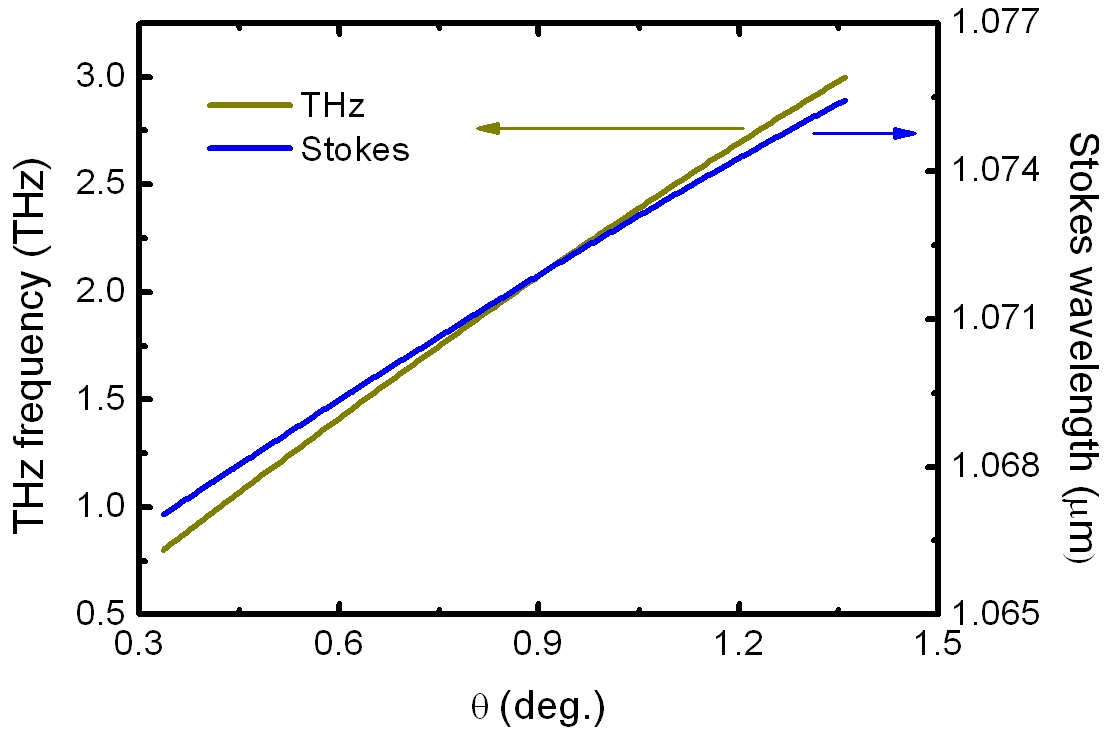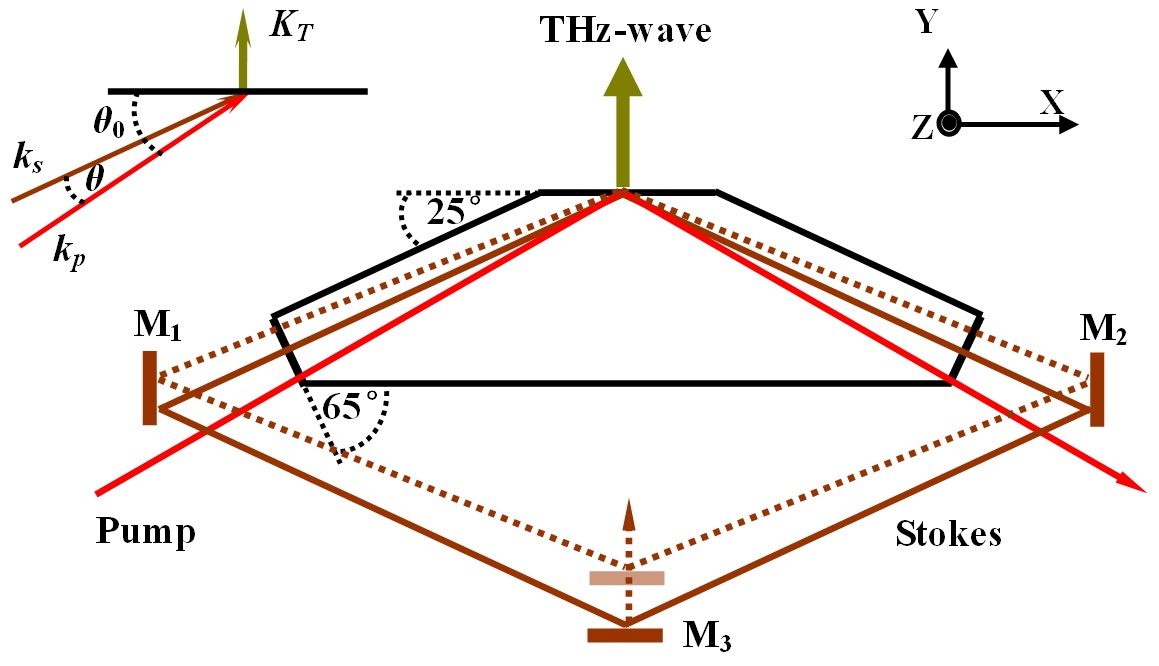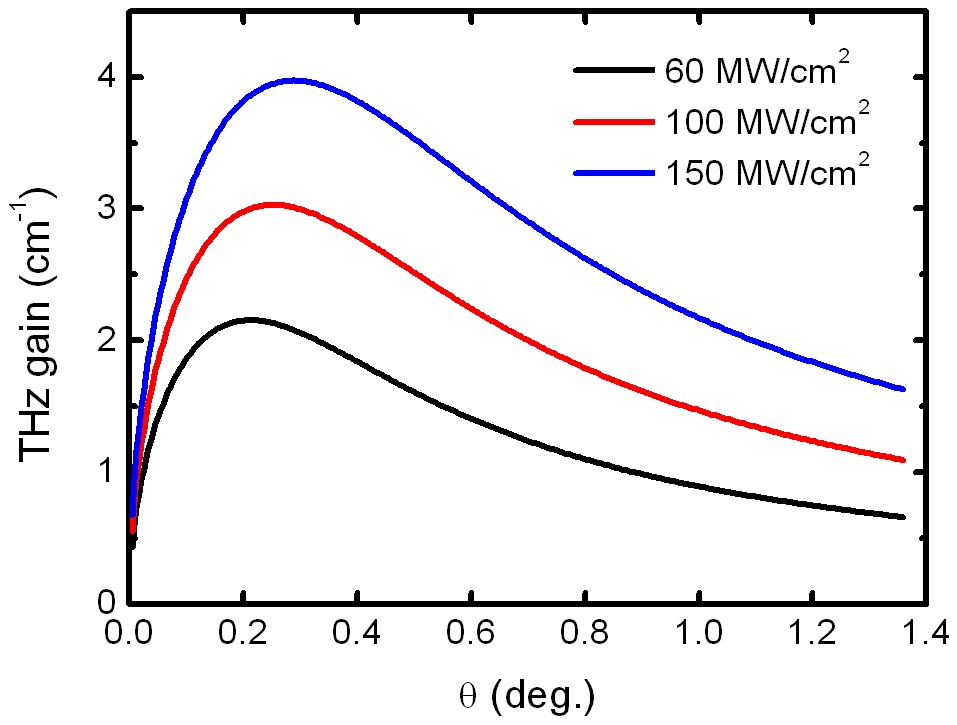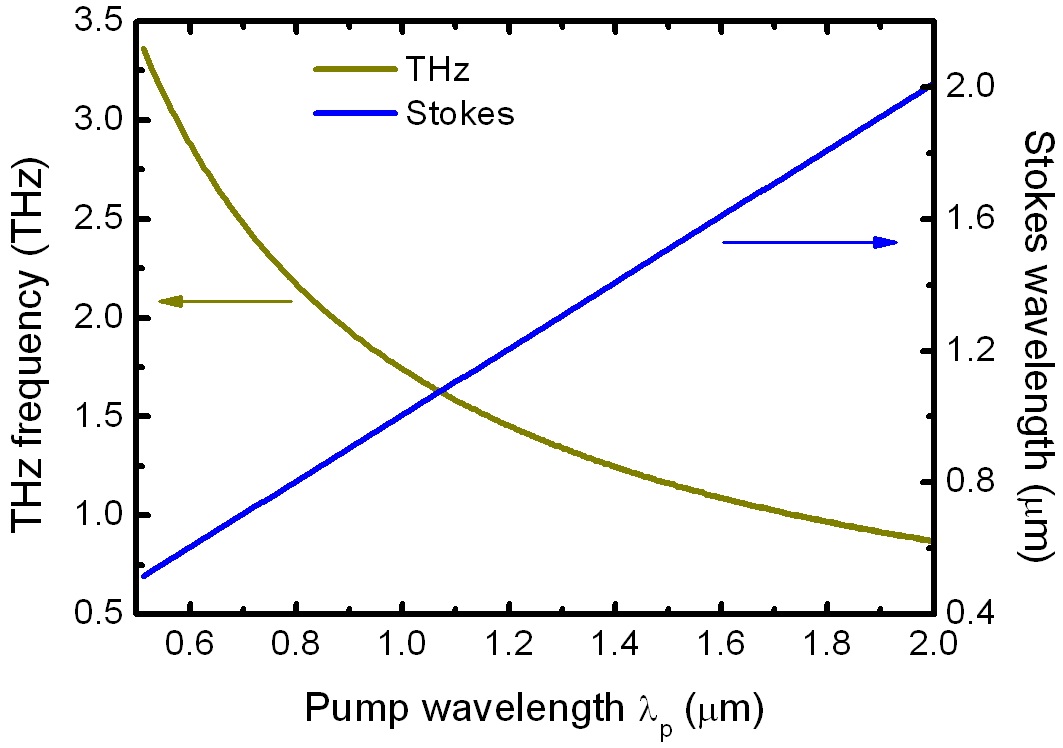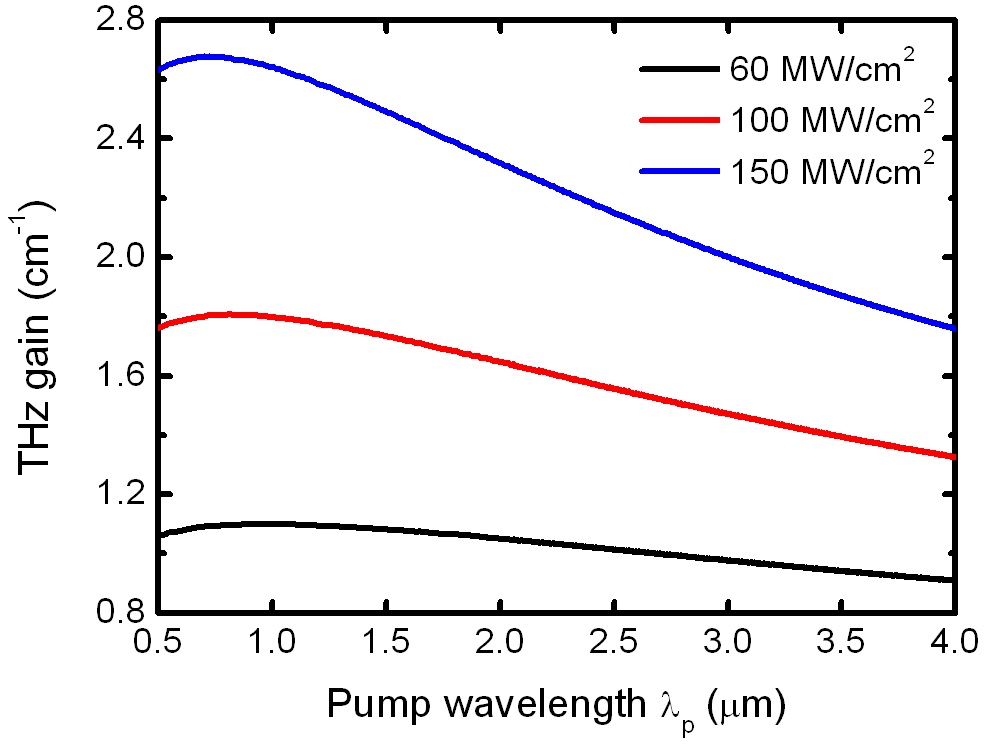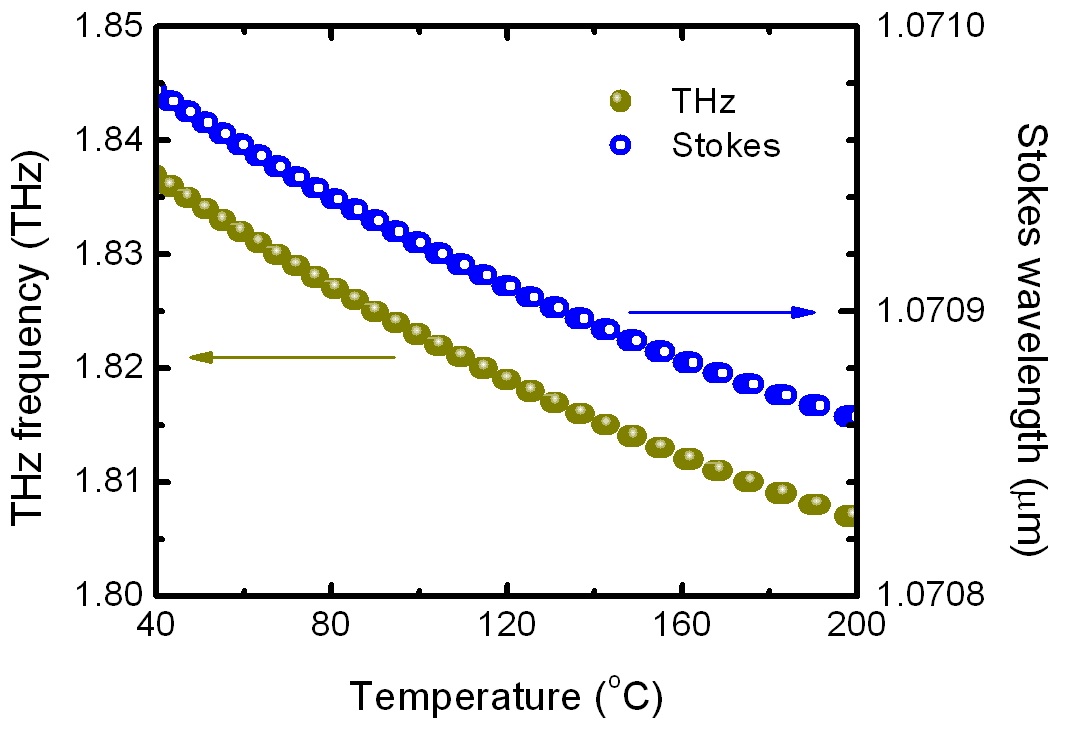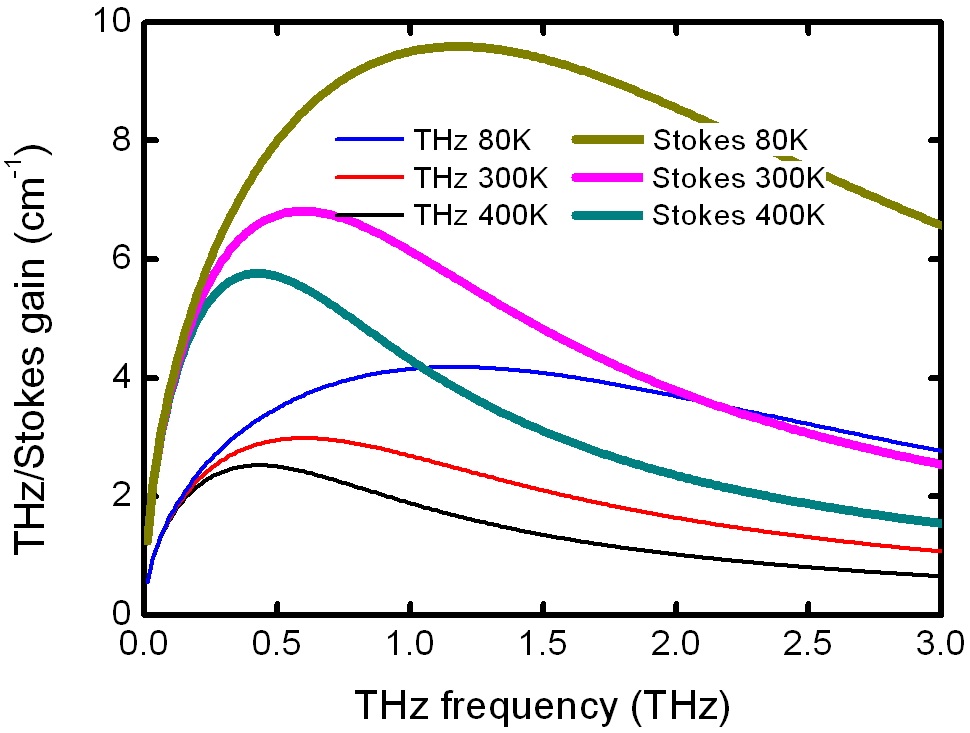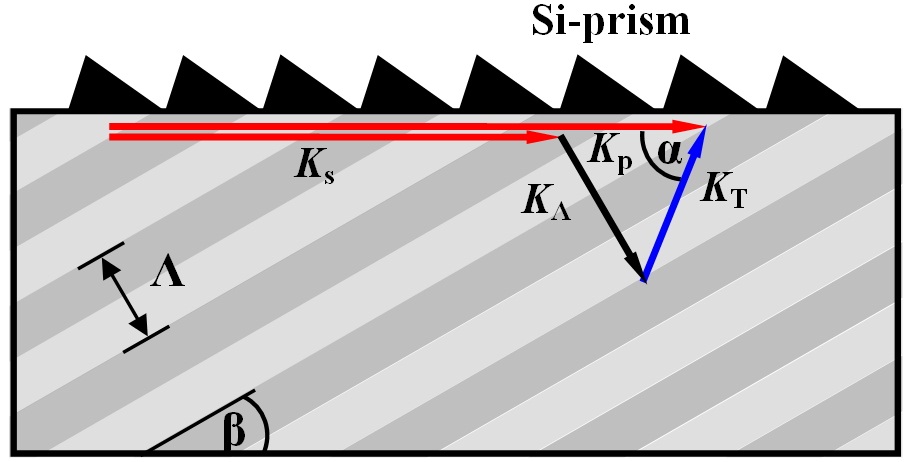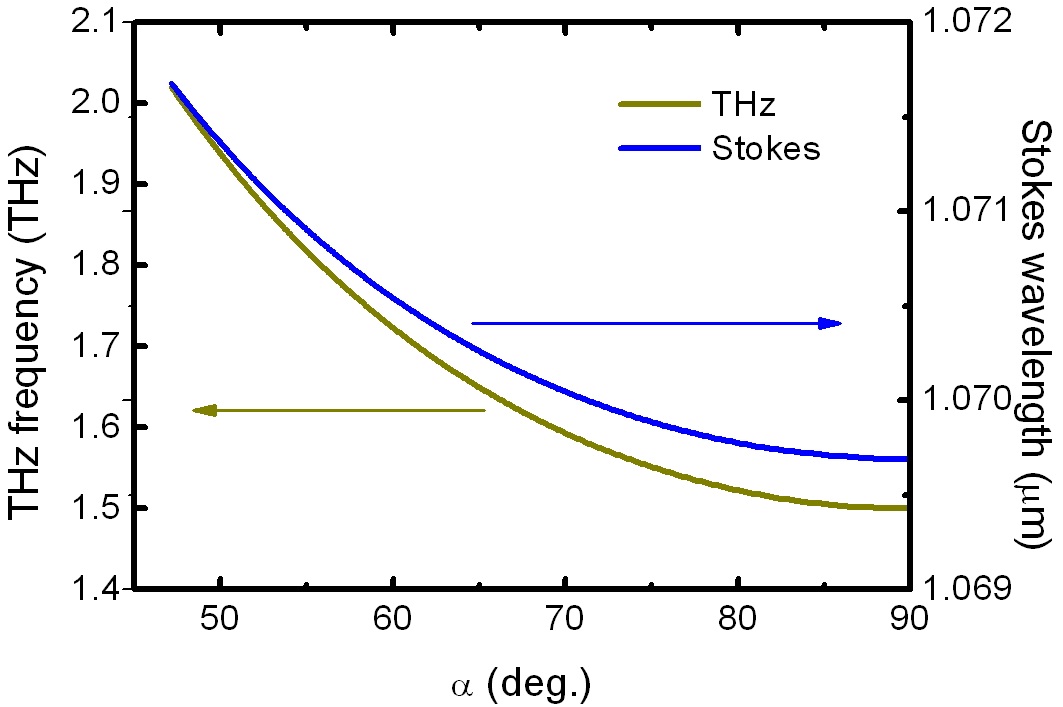



Frequency tuning characteristics of a THz-wave by varying phase-matching angle and pump wavelength in a noncollinear phase-matching THz-wave parametric oscillator (TPO) are analyzed. A novel scheme to realize the tuning of a THz-wave by moving the cavity mirror forwards and backwards is proposed in a noncollinear phase-matching TPO. The parametric gain coefficients of the THz-wave in a LiNbO3 crystal are explored under different working temperatures. The relationship between the poling period of periodically poled LiNbO3 (PPLN) and the THz-wave frequency under the condition of a quasi-phasematching configuration is deduced. Such analyses have an impact on the experiments of the TPO.
Applications of the THz-wave in spectrum analysis [1,2], biology and medicine [3,4], communications [5], security technologies [6] and quality control [7] have raised much interest in terahertz photonics. Unfortunately, lack of practical terahertz sources restricts the applications of the THz-wave. Until there are more practical sources available, the full potential of terahertz radiation will remain, to a great extent, unrealized. Due to the interest in exploiting this region there are many schemes proposed on source technologies over the last fifteen years or so. [8-11] Among many electronic and optical methods for the THz-wave generation, the THz-wave parametric oscillator (TPO) exhibits many advantages, such as compactness, narrow linewidth, coherent, wide tunable range, high-power output and room temperature operation [9]. For efficient generation of the THz-wave, MgO:LiNbO3 is one of the most suitable crystals due to its large nonlinear coefficient and its wide transparency range. [12] In the TPO both noncollinear phasematching configuration and quasi-phase-matching configuration can perform well. The tuned THz-wave can be realized by varying phase-matching angle, pump wavelength and operation temperature.
In this letter, the frequency tuning characteristics of the THz-wave by changing the pump wavelength, the phasematching angle, the operation temperature and the poling period of the PPLN crystal are investigated. Parametric gain coefficients of the THz-wave under different working temperatures are analyzed.
The phase-matching in the TPO is necessary to avoid destructive interference of the Stokes wave and the THz-wave which are produced by the stimulated Raman scattering. For a LiNbO3 crystal the refractive index in the terahertz range is around 5, as compared to 2 in the near infrared, so birefringence phase-matching is not applicable in this case. One method that has been used by several groups is noncollinear phase-matching based on the bulk LiNbO3 crystal as the nonlinear gain medium, in which the pump wave, the Stokes wave and the THz-wave are all non-parallel with each other, as is shown in Fig. 1(a). For the THz-wave parametric process, two requirements have to be fulfilled: the energy conservation condition
and the phase-matching condition
Here,
are the wave-vectors of the pump, the Stokes and the THz wave, respectively. The phase-matching condition can be rewritten as
where
Usually, collinear phase-matching is the preferred configuration for a nonlinear frequency conversion process because it provides the longest interaction length. In recent years PPLN has been widely investigated for generating the THz radiation, which ensures two or even three mixing waves collinearly propagate, as is shown in Fig. 1 (b-e). In quasi-phase-matching configuration, the phase-matching condition
has to be fulfilled, where
is the grating vector of an alternating second-order nonlinearity induced by periodic poling of crystal. In the Fig. 1(b) the forwards parametric terahertz process is achieved by
being antiparallel to the pump
, the Stokes
and the THz-wave
wave-vectors. The backward parametric terahertz process is achieved by
travelling backward with respect to the pump
and the Stokes
, as is shown in Fig. 1(c). Most of the THz energy generated in the forwards and the backwards process is absorbed by the crystal due to the large absorption coefficients in the terahertz range. In Fig. 1(d), the grating vector
is arranged perpendicular to the pump wave propagation direction, thereby allowing parallel propagation of the pump and the Stokes waves while still retaining the rapid exiting of the THz-wave through the side facet of the crystal. The generated THz-wave is extracted from the nonlinear crystal by an array of high resistivity Si-prisms avoiding total internal reflection. In Fig. 1(e), the pump and the Stokes wave are collinear, while the THz-wave propagates perpendicular to the side facet of the crystal. The THz-wave is coupled out without any coupler, so the loss is low and the beam quality is high.
III. TUNING CHARACTERISTICS OF THE THZ-WAVE
Optical parametric oscillators are more versatile because of their tuning properties. In this section we analyze the tuning characteristics of the THz-wave based on the noncollinear phase-matching and the quasi-phase-matching configuration. According to the Eqs. (1) and (3), the tunable THz-wave frequency vT can be realized by varying the pump wavelength
is set to ensure that the THz-wave with the frequency of 1.5 THz emits perpendicularly from the LiNbO3 crystal. The relationship between the initial position of the mirror M3 and the exit point of the THz-wave
Where
According to the Eqs. (3) and (6) the tuning THz-wave can be realized by moving the mirror M3 backwards and forwards. Such tuning is shown in Fig. 4. The tuning range of 0.8-3 THz can be obtained by moving the M3 forwards from 0.87 to 3.51 mm. The method is simple and practical for the tuning output of the THz-wave.
In the process of the THz-wave generation, the THz-wave parametric gain is of vital importance. According to the Ref. (14), the analytical expressions of the exponential gain for the THz-wave can be written as
where
The tuned THz-wave can be achieved also by varying the pump wavelength
The tuning THz-wave can be achieved by changing the working temperature of the LiNbO3 crystal. The relationship among the crystal temperature, the THz-wave frequency vT and the Stokes wavelength
phase-matching and the pump wavelength, the THz-wave frequency is insensitive to the working temperature. The crystal temperature not only affects the phase-matching condition, but also has a significant impact on the parametric gain coefficient
The tuning output of the THz-wave can be realized in quasi-phase-matching configuration by varying the poling period of the PPLN crystal and the phase-matching angle. In this section we analyze the tuning characteristics based on the model shown in Fig. 1(e), since the THz-wave is coupled out perpendicularly to the side surface of the PPLN crystal without using any output coupler. According to the Fig. 1(e), the poling period Λ and the phase-matching angle
Where
angle
As the THz-wave propagation direction is not perpendicular to the side surface of the PPLN crystal, the THz-wave can be coupled out by employing an array of Si-prisms to avoid total internal reflection [16,17], as is shown in Fig. 11. The angle α is between the THz-wave wave-vector and the pump wave wave-vector. The relationship between the angle α and the THz-wave wavelength
According to the Eqs. (1) and (12), the tuning THz-wave with different propagation directions can be realized in a PPLN crystal with a fixed poling period Λ and a fixed angle
approximately 5.1 and 3.4 respectively, the minimum value of the angle
The THz-wave tuning characteristics of the noncollinear phase-matching TPO and the quasi-phase-matching TPO are investigated. In the condition of the noncollinear phase-matching configuration, the THz-wave frequency is sensitive to the variation of the phase-matching angle
